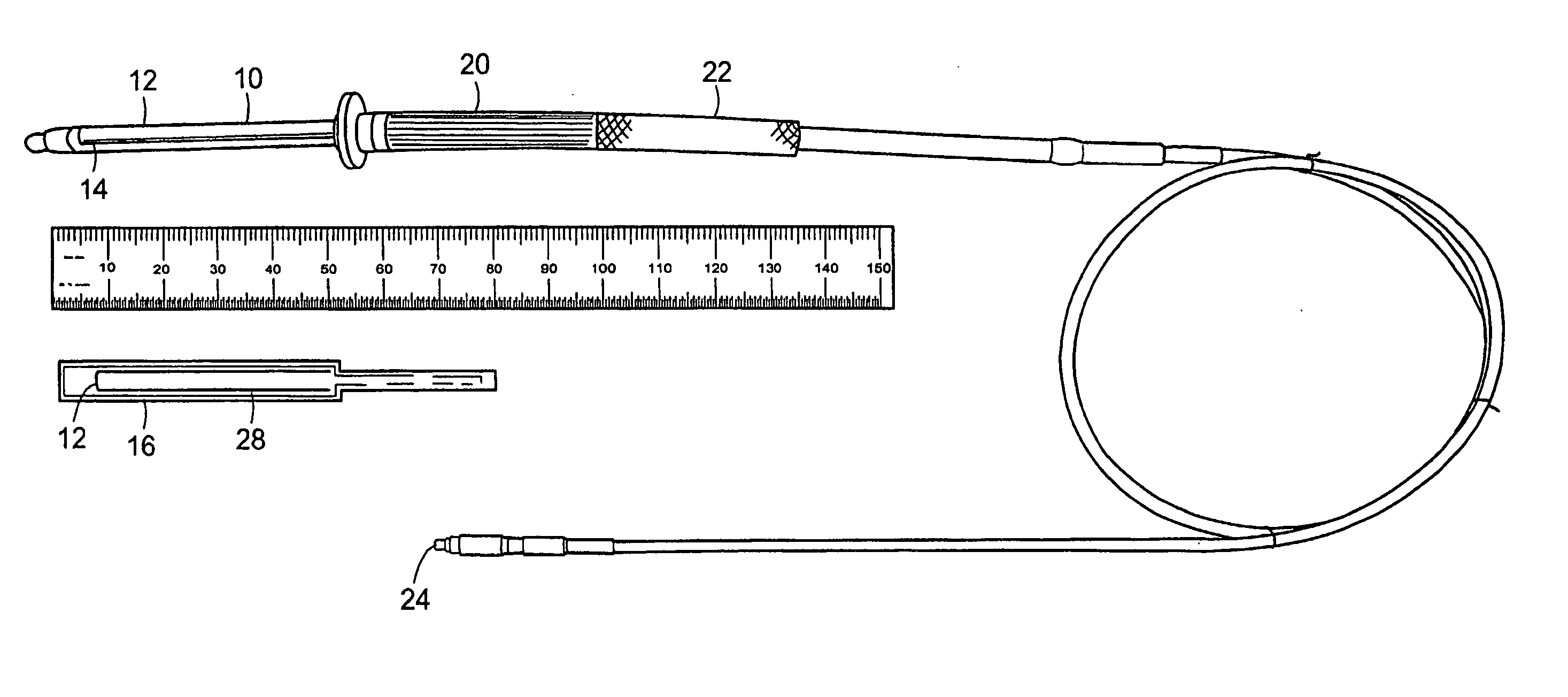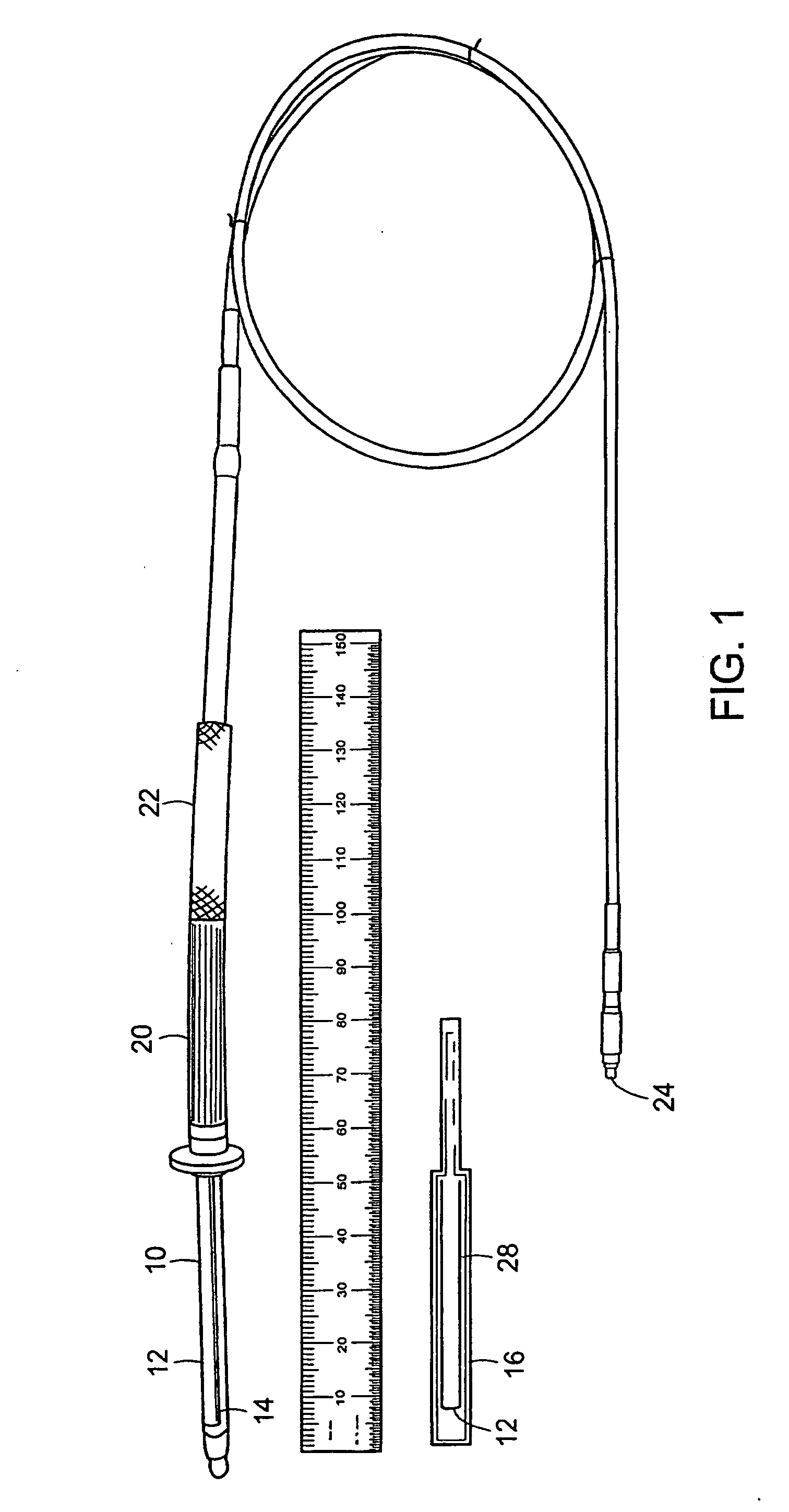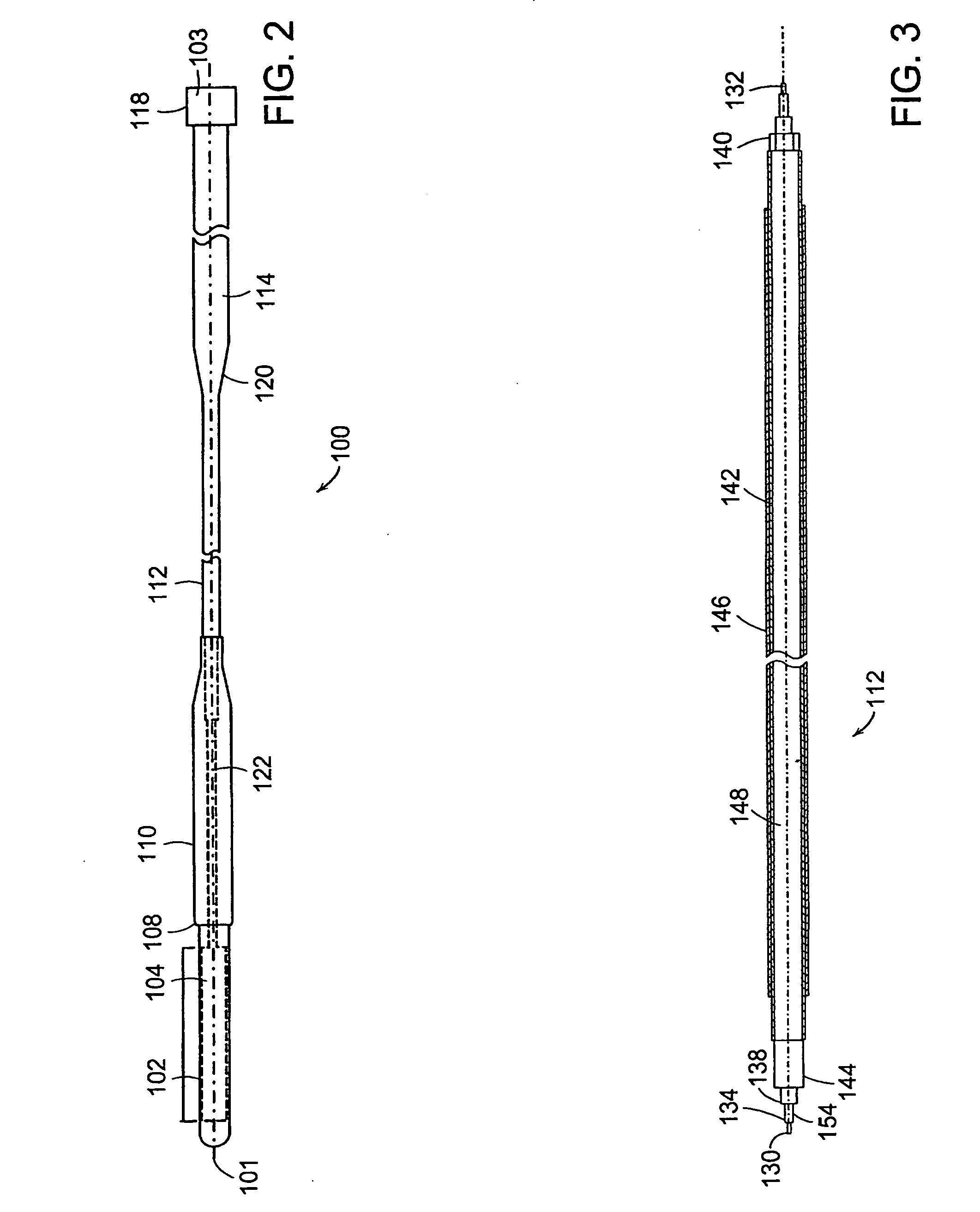Evaluating the urethra and the periurethral Tissues
a urethral tissue and periurethral tissue technology, applied in the field of in vivo mri, can solve the problems of coagulation necrosis of the tissue, patients treated with cryosurgery are at risk of developing impotence and incontinence after treatment, and advanced carcinoma, by contrast, is not appropriately treated using any of these regimens, so as to reduce the potential rf heating effect and improve coil performan
- Summary
- Abstract
- Description
- Claims
- Application Information
AI Technical Summary
Benefits of technology
Problems solved by technology
Method used
Image
Examples
example 1
Heating Properties
[0088] Heating experiments were performed with the coil inserted into agar gel (DIFCO Laboratories, Franklin Lakes, N.J.) phantom doped with 0.45% NaCl to mimic the electrical properties of the body. The conductivity of the gel was measured to be 0.8 S / m at 64 MHz, a median value in the range of human tissues. Temperature was monitored with an eight-channel fluoroptic thermometer (UMI 8, FISO Technologies, Inc., Quebec, Canada). Five sensors were equally spaced and placed adherent to the outer coil tubing along one conductor of the single-loop coil. Thus, two sensors had direct contact with the distal and proximal edge of the flexible circuit. A sixth sensor was placed at the opening of the balun circuit.
[0089] The specific absorption rate (SAR) was calculated by finding the initial slope of the temperature rise (dT / dt) and multiplying by the specific heat capacity of the agar gel, C=4180 J / kg. Scanning was performed on a 1.5T Signa LX(GE Medical Systems, Milwauk...
example 2
In Vitro Testing
[0091] Imaging was performed using the body coil of the scanner as RF transmitter and the endourethral coils as receive-only probes. For assessing the signal characteristics of the antennas, proton density (PD)-weighted axial and coronal images were acquired with a fast spin-echo (FSE) sequence (PD-FSE: 8 echoes, TR / TE=2000 / 14.5 ms, BW=15.6 kHz, 6 NEX). Axial 3 min sections with a 30×30 min field of view (FOV) and a 256×128 matrix as well as coronal 2 min sections with a 80×80 min FOV and a 256×128 matrix were collected in 3:24 min.
[0092] The coils' imaging performance was evaluated in one formalin fixated as well as in six freshly harvested female human cadaver pelvices. The coils were subsequently introduced into the urethra with the tip entering the bladder by approximately 5 mm. This position ensured the whole urethra and the internal sphincter to be covered by highest signal intensity and homogeneity of the coil. For localization purposes, a 5″×9″ rectangular ...
examples 1 and 2
Results of Examples 1 and 2
[0094] For each position of the coil / phantom in the scanner, the temperature increases from sensor 1 to sensor 5, i.e. from the inside of the phantom to the edge of the phantom (Table 1).
TABLE 1SAR rise within 10:00 min of scanning at five different locations along thecoil. The imaging region of the coil as well as the mouth of the coaxial chokewere inserted into agar-gel by approximately 75 mm. Positions of the coil / phantomin the scanner were: a) middle of bore, coil connected, b) middle of bore,coil disconnected, i.e. decoupling disabled, c) close to scanner bore, coilconnected, and d) close to scanner bore, decoupling disabled.SARSARSARSARSARSARPosition[W / kg][W / kg][W / kg][W / kg][W / kg][W / kg]of coilSensor 1Sensor 2Sensor 3Sensor 4Sensor 5Sensor 6a)0.630.671.051.261.681.54b)1.121.121.751.681.821.70c)1.681.41.822.312.452.07d)3.783.784.345.045.324.32
[0095] The temperature increases when the coil is disconnected from the scanner surface coil port, i.e. when t...
PUM
 Login to View More
Login to View More Abstract
Description
Claims
Application Information
 Login to View More
Login to View More - Generate Ideas
- Intellectual Property
- Life Sciences
- Materials
- Tech Scout
- Unparalleled Data Quality
- Higher Quality Content
- 60% Fewer Hallucinations
Browse by: Latest US Patents, China's latest patents, Technical Efficacy Thesaurus, Application Domain, Technology Topic, Popular Technical Reports.
© 2025 PatSnap. All rights reserved.Legal|Privacy policy|Modern Slavery Act Transparency Statement|Sitemap|About US| Contact US: help@patsnap.com



